- Home
- Science
- Environment
- Here's Where You Can Swim With The World's Largest Shark [PHOTOS]
Here's Where You Can Swim With The World's Largest Shark [PHOTOS]
Tam-awan is a coastal town in Oslob, located on the Southern Philippines island of Cebu.
![Here's Where You Can Swim With The World's Largest Shark [PHOTOS]](/_next/image?url=https%3A%2F%2Fstaticbiassets.in%2Fthumb%2Fmsid-21033823%2Cwidth-700%2Cheight-525%2Cimgsize-110333%2Ftam-awan-is-a-coastal-town-in-oslob-located-on-the-southern-philippines-island-of-cebu-.jpg&w=3840&q=75)
Travelers come to this tropical location expecting to swim with and feed whale sharks, the biggest fish and shark in the sea.
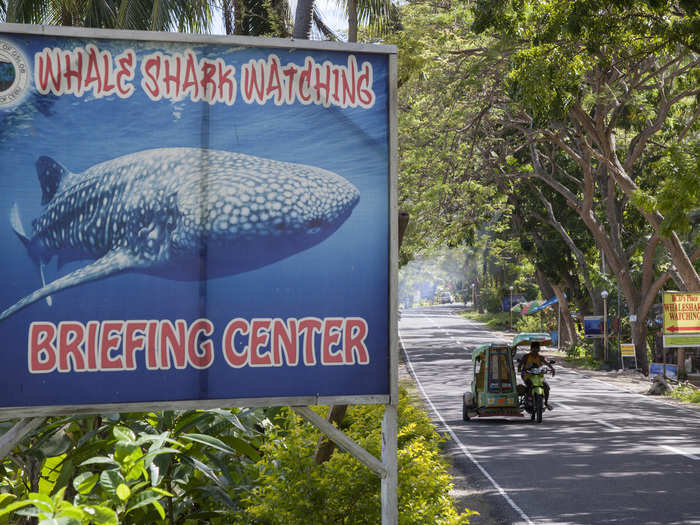
Whale sharks can grow up to 40 feet long, or roughly the size of a school bus.
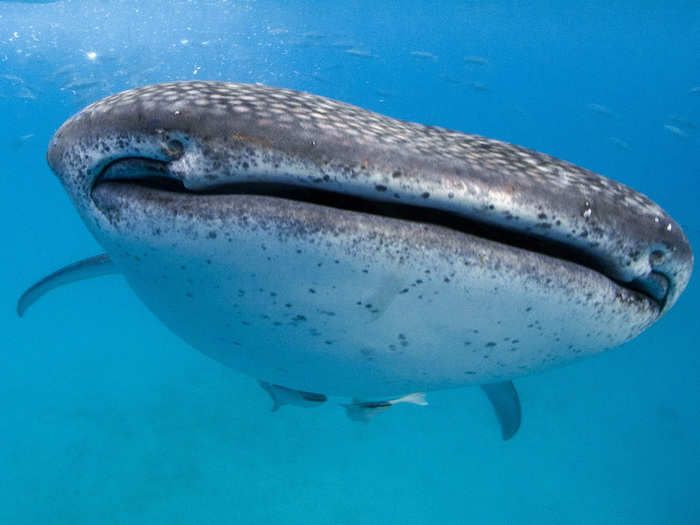
They are known to be very gentle creatures, despite their colossal size.
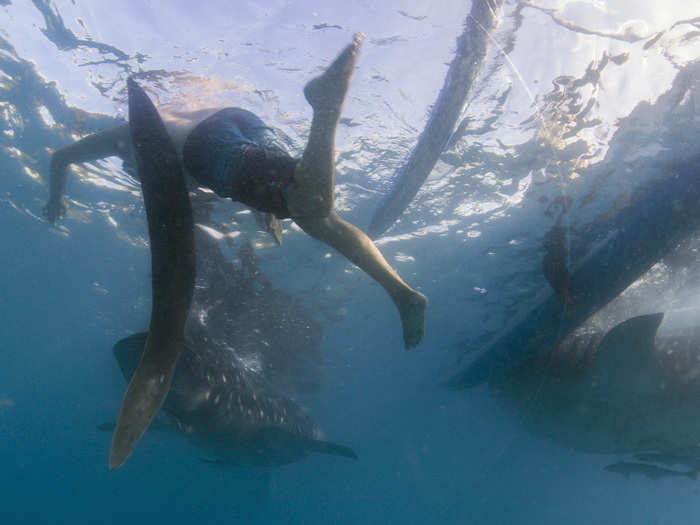
Whale sharks are filter feeders. They like to eat very tiny plankton.
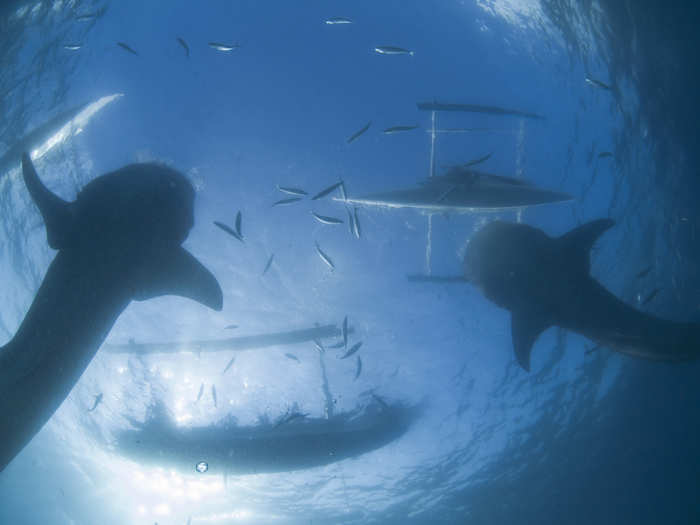
The shark uses its giant mouth to suck in a huge gulp of sea water like a vacuum cleaner.
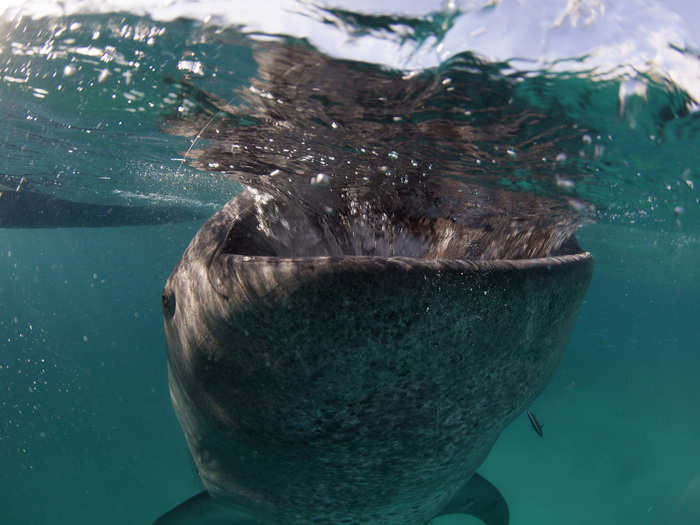
The shark then releases the water through its gills, like a strainer, as it swims.
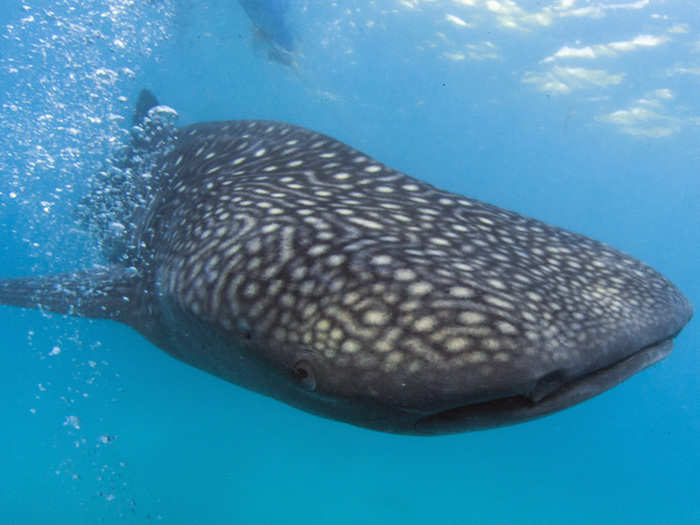
Conservationists are afraid that the whale sharks' feeding habits will change if local fisherman continue to hand-feed them small shrimp.
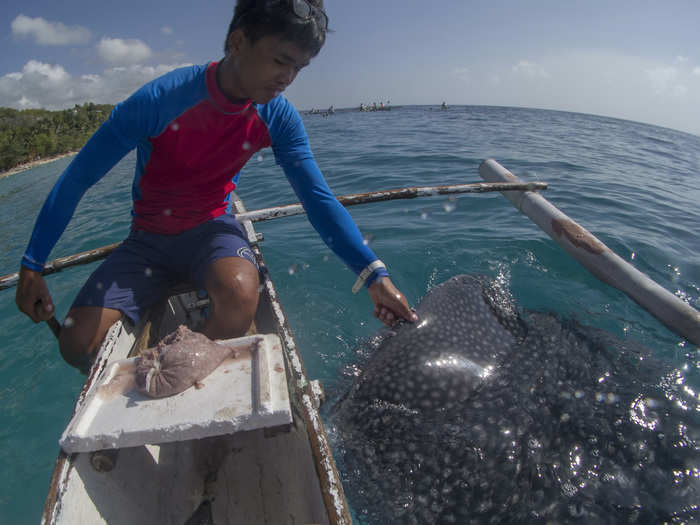
There is also growing concern that the sharks are more at risk of being whacked by the propellers of boats when they swim along the shore looking for humans to hand them food.
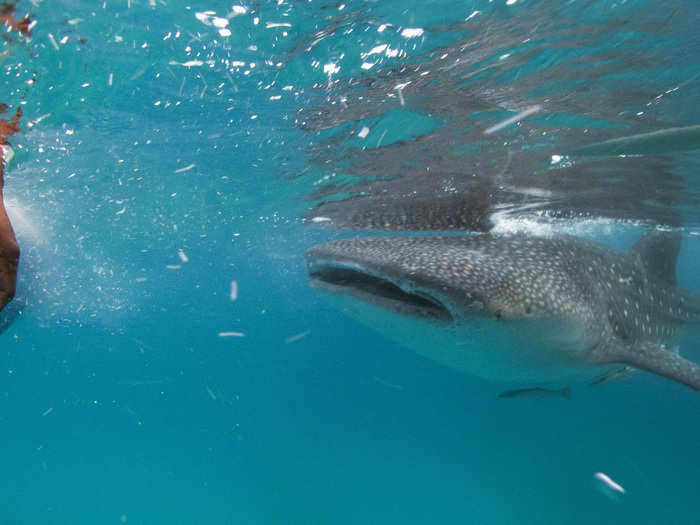
The fisherman are reluctant to give up the practice of hand-feeding because it has turned into an increasingly popular tourist attraction.
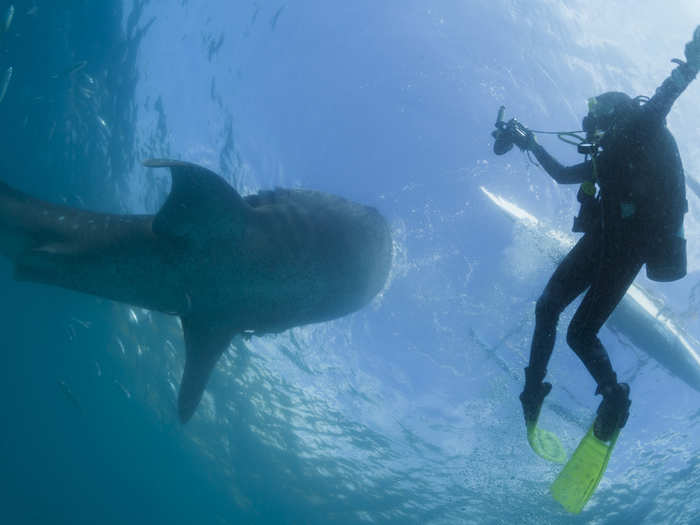
They argue that whale sharks have been spotted around Oslob shores since the 1980s, and that a greater number just means they are becoming more accustomed to the waters.
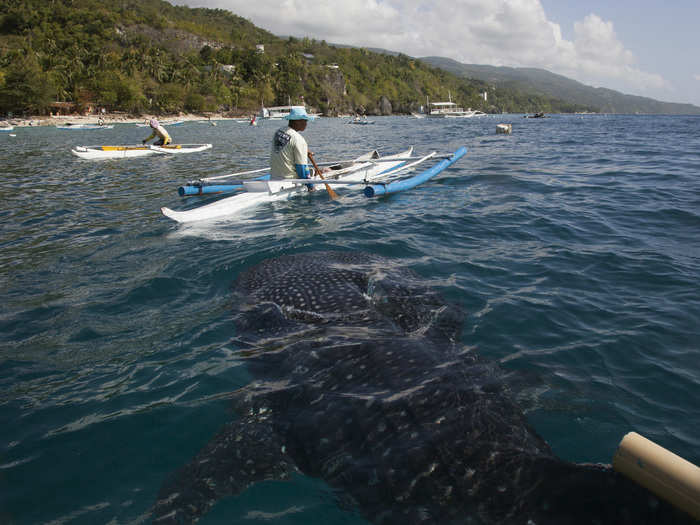
Seizing the opportunity, many fisherman have started profitable whale shark watching tours.
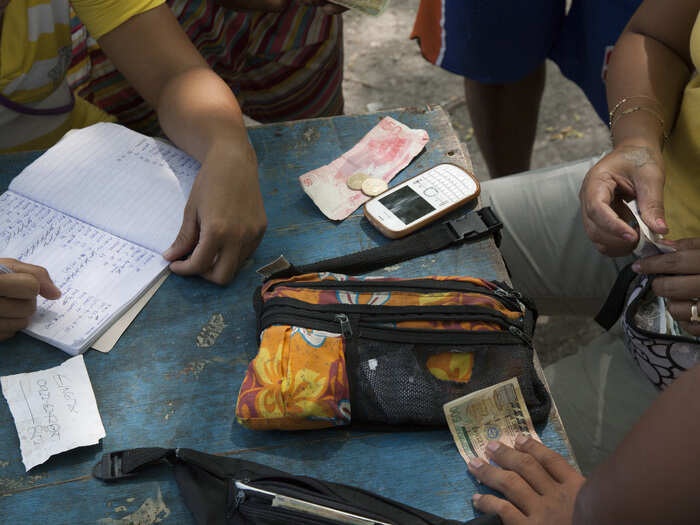
Snorkelers and scuba divers can even go swimming with the massive marine animals.
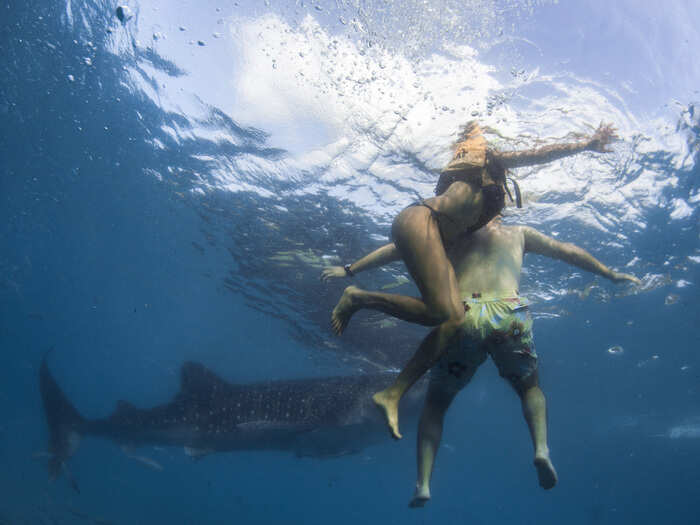
Fishermen get up at dawn to search for and feed whale sharks off the beach.
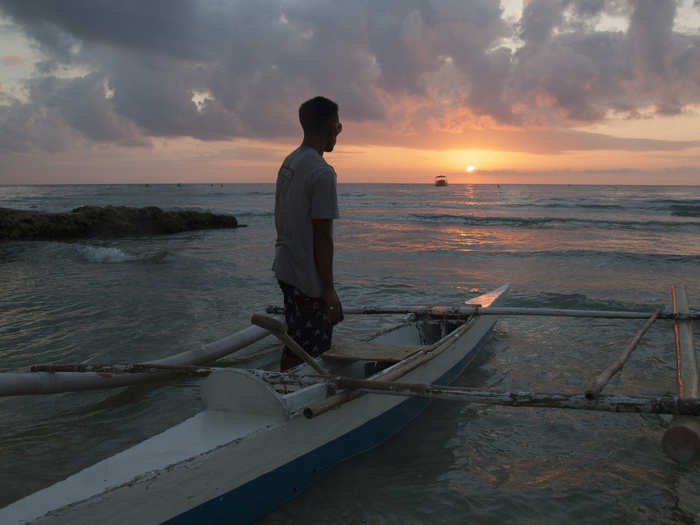
The sharks are typically fed packets of "uyap," or small shrimp.
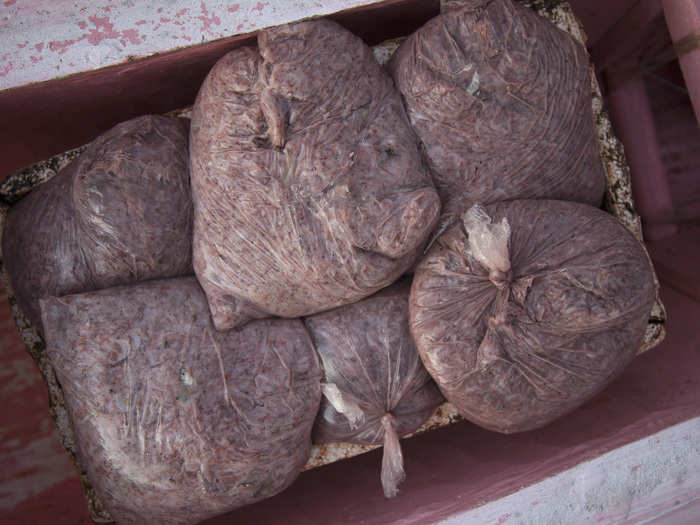
The small shrimps are fed to the shark by a fisherman on a paddleboat.
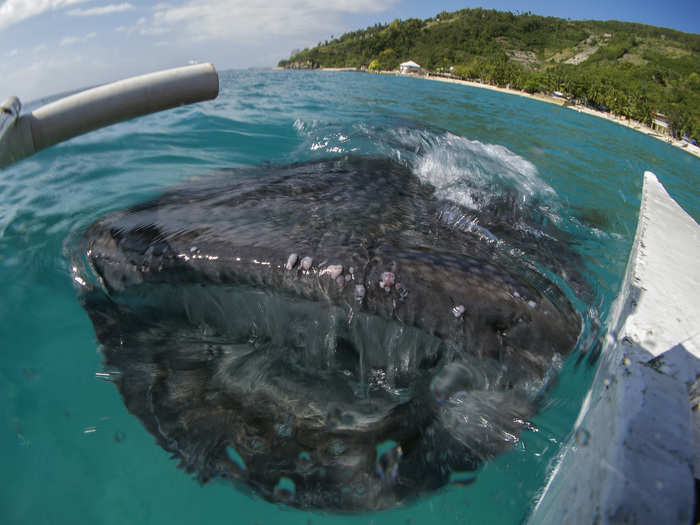
Whale sharks can be individually identified by the unique patten of spots and stripes on their skin, which is comparable to a human fingerprint.
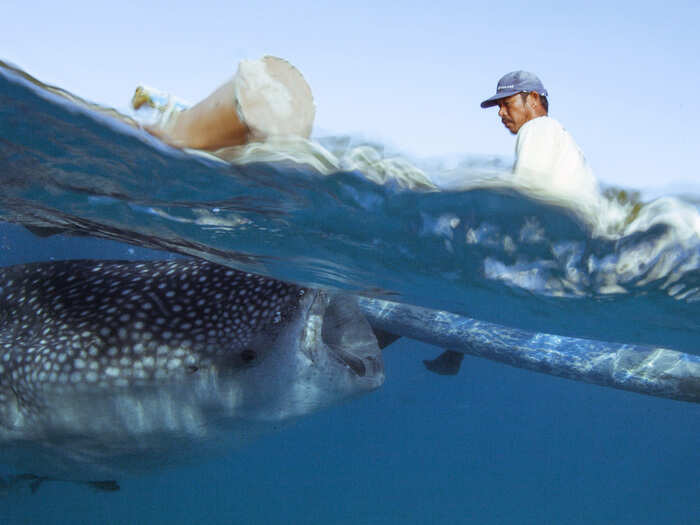
After a long day, fishermen pull their boats onto the beach.
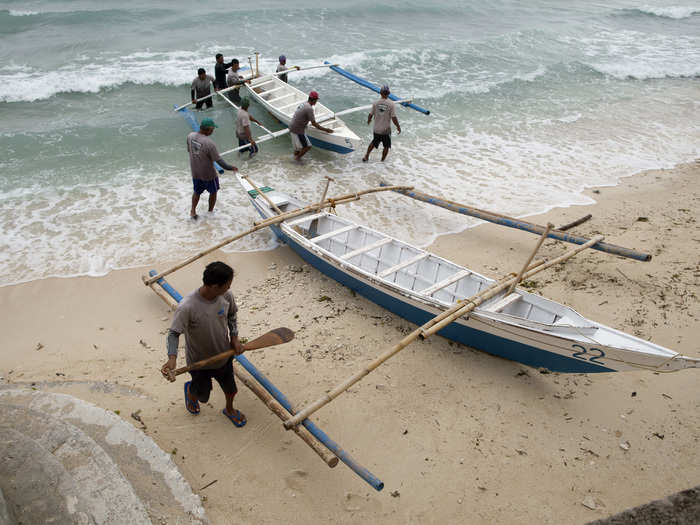
Globally, whale sharks face even bigger threats: they are hunted for their meat, fins, and oil.
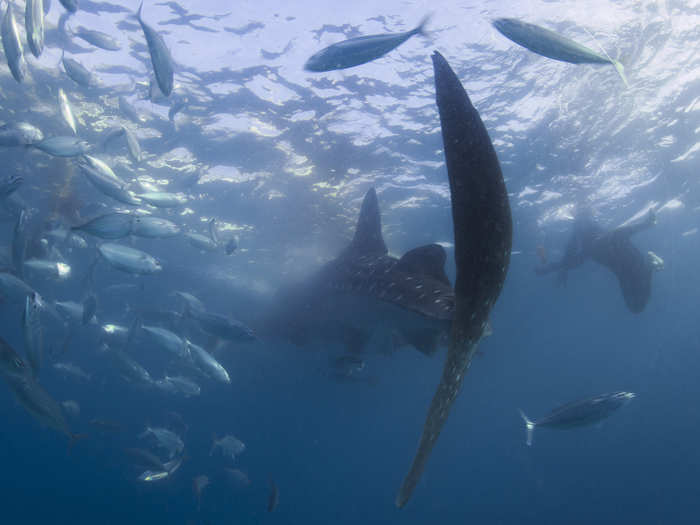
The species is listed as "vulnerable" by the International Union for Conservation of Nature.

The practice of hand-feeding, however, continues despite the criticism. Growing public opposition has reduced the number of visitors, much to the dismay of local businesses.
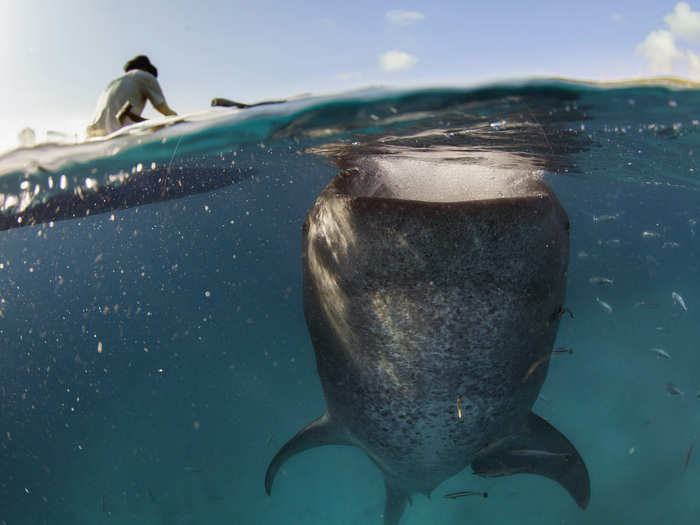
Popular Right Now
Popular Keywords
Advertisement
